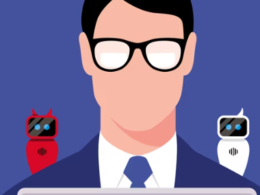the
health strategy
institute
management and technology review
Joaquim Cardoso MSc
Chief Researcher and Strategy Officer (CRSO)
for “the health strategist ” — research unit
Chief Editor for“the health strategist” — knowledge portal
Senior Advisor — for “the health strategist” — advisory consulting
July 16, 2023
IDEA IN BRIEF
The Problem
- In the past two decades, companies’ efforts to involve outsiders in the process of coming up with new offerings have taken off.
- Crowdsourcing and idea competitions are two prime examples.
- But firms still struggle to make use of the plethora of ideas that are generated.
The Root Causes
- A lack of an efficient way to evaluate the ideas, domain experts’ struggles in accepting novel ideas,
- the inability of contributors to provide details needed to make their ideas feasible,
- and the challenge of synthesizing different ideas are all factors.
The Solution
- Generative AI can help overcome these challenges.
- It can augment the creativity of employees and customers and help them generate and identify novel ideas as well as improve the quality of raw ideas.

ONE PAGE SUMMARY
There is a high potential of generative AI technologies to augment human creativity and overcome the challenges of democratizing innovation.
The use of generative AI can address four key challenges faced by enterprises:
- evaluation overload,
- expertise bias,
- feasibility limitations, and
- difficulty in synthesizing customer requirements.
By leveraging generative AI, organizations can benefit from five key ways:
1.Promote Divergent Thinking: Generative AI supports divergent thinking by making associations among remote concepts and producing novel ideas. For example, text-to-image algorithms like Midjourney can combine prompts to create unique product designs.
2.Challenge Expertise Bias: Atypical designs generated by generative AI can inspire designers to think beyond preconceived notions and overcome biases. This approach leads to solutions that humans may not have imagined using traditional approaches.
3.Assist in Idea Evaluation: Generative AI tools can help increase the specificity of ideas and evaluate their pros and cons. By assessing dimensions such as novelty, feasibility, specificity, impact, and workability, generative AI assists in idea evaluation and decision-making.
4.Support Idea Refinement: Generative AI tools can combine a large number of ideas to produce stronger concepts. This capability is particularly useful in idea contests or when trying to develop comprehensive solutions by merging different concepts.
5.Facilitate Collaboration with and Among Users: Generative AI enables collaboration between designers, users, and communities. Users can generate designs, personalize products, and collaborate on crowdsourcing platforms to develop top designs.
Generative AI’s ability to augment human creativity holds significant potential for organizations across various sectors.
By overcoming traditional barriers, generative AI empowers individuals and teams to generate novel ideas, refine concepts, and collaborate effectively.
Although resistance to change may exist, the benefits of generative AI outweigh the challenges, democratizing innovation and unlocking new possibilities for problem-solving.
Statistics:
- Generative AI tools such as Midjourney, ChatGPT, and Stable Diffusion offer diverse capabilities for creating new content and generating ideas.
- By leveraging generative AI, organizations can evaluate a wide range of product concepts rapidly and inexpensively, keeping up with trends and offering a constantly changing selection of products.
Examples:
- Using Midjourney, a text-to-image algorithm, and Stable Diffusion, a text-to-image model, generative AI was employed to create novel product designs based on textual prompts. This approach allows for the rapid evaluation of a wide range of product concepts.
- ChatGPT, a large language model, was used to generate business ideas by connecting three distinct entities through trisociation. These examples demonstrate how generative AI can connect ideas and produce innovative concepts that might not have been conceived otherwise.
- Stable Diffusion was utilized to generate designs inspired by crab-like toys, which were then imagined with functional capabilities, such as a wall-climbing toy or a slow-feeder dish for pets. This demonstrates how generative AI can overcome biases and inspire unconventional design solutions.
- ChatGPT evaluated the pros and cons of raw ideas related to minimizing food waste, demonstrating its capability to assist in idea evaluation by providing balanced analysis and considering various dimensions of creativity.
- Generative AI tools like ChatGPT and Stable Diffusion were used to facilitate collaboration between designers and users, resulting in innovative flying car designs and thematic variations based on prompts such as resembling a dragonfly or a tiger.
These examples illustrate the practical applications of generative AI in augmenting human creativity and addressing the challenges of democratizing innovation.
TO READ THE FULL VERSION OF THE PAPER
How Generative AI Can Augment Human Creativity
Harvard Business Review
by Tojin T. Eapen, Daniel J. Finkenstadt, Josh Folk, and Lokesh Venkataswamy
From the Magazine (July–August 2023)













